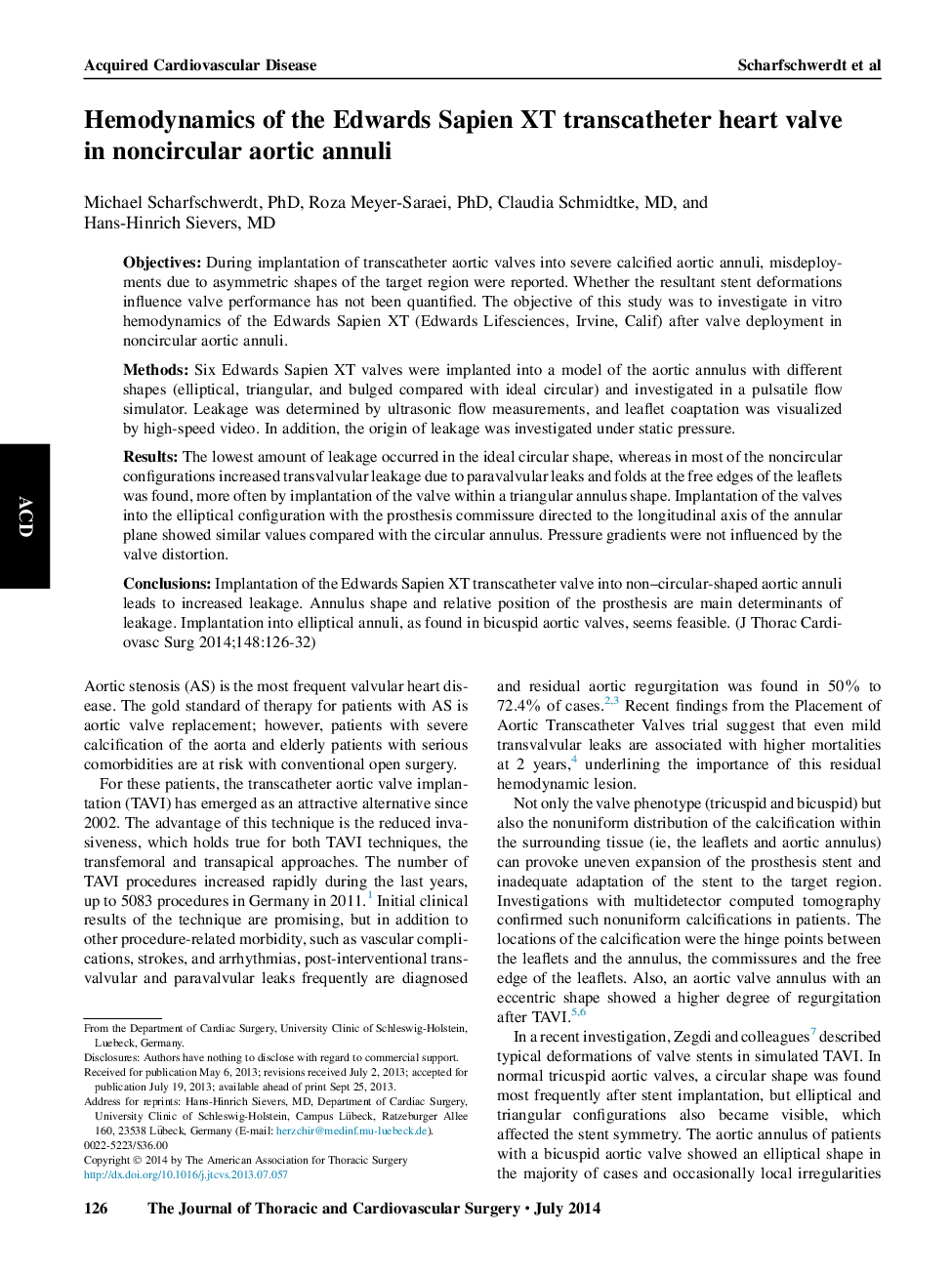| Article ID | Journal | Published Year | Pages | File Type |
|---|---|---|---|---|
| 2980754 | The Journal of Thoracic and Cardiovascular Surgery | 2014 | 7 Pages |
ObjectivesDuring implantation of transcatheter aortic valves into severe calcified aortic annuli, misdeployments due to asymmetric shapes of the target region were reported. Whether the resultant stent deformations influence valve performance has not been quantified. The objective of this study was to investigate in vitro hemodynamics of the Edwards Sapien XT (Edwards Lifesciences, Irvine, Calif) after valve deployment in noncircular aortic annuli.MethodsSix Edwards Sapien XT valves were implanted into a model of the aortic annulus with different shapes (elliptical, triangular, and bulged compared with ideal circular) and investigated in a pulsatile flow simulator. Leakage was determined by ultrasonic flow measurements, and leaflet coaptation was visualized by high-speed video. In addition, the origin of leakage was investigated under static pressure.ResultsThe lowest amount of leakage occurred in the ideal circular shape, whereas in most of the noncircular configurations increased transvalvular leakage due to paravalvular leaks and folds at the free edges of the leaflets was found, more often by implantation of the valve within a triangular annulus shape. Implantation of the valves into the elliptical configuration with the prosthesis commissure directed to the longitudinal axis of the annular plane showed similar values compared with the circular annulus. Pressure gradients were not influenced by the valve distortion.ConclusionsImplantation of the Edwards Sapien XT transcatheter valve into non–circular-shaped aortic annuli leads to increased leakage. Annulus shape and relative position of the prosthesis are main determinants of leakage. Implantation into elliptical annuli, as found in bicuspid aortic valves, seems feasible.
